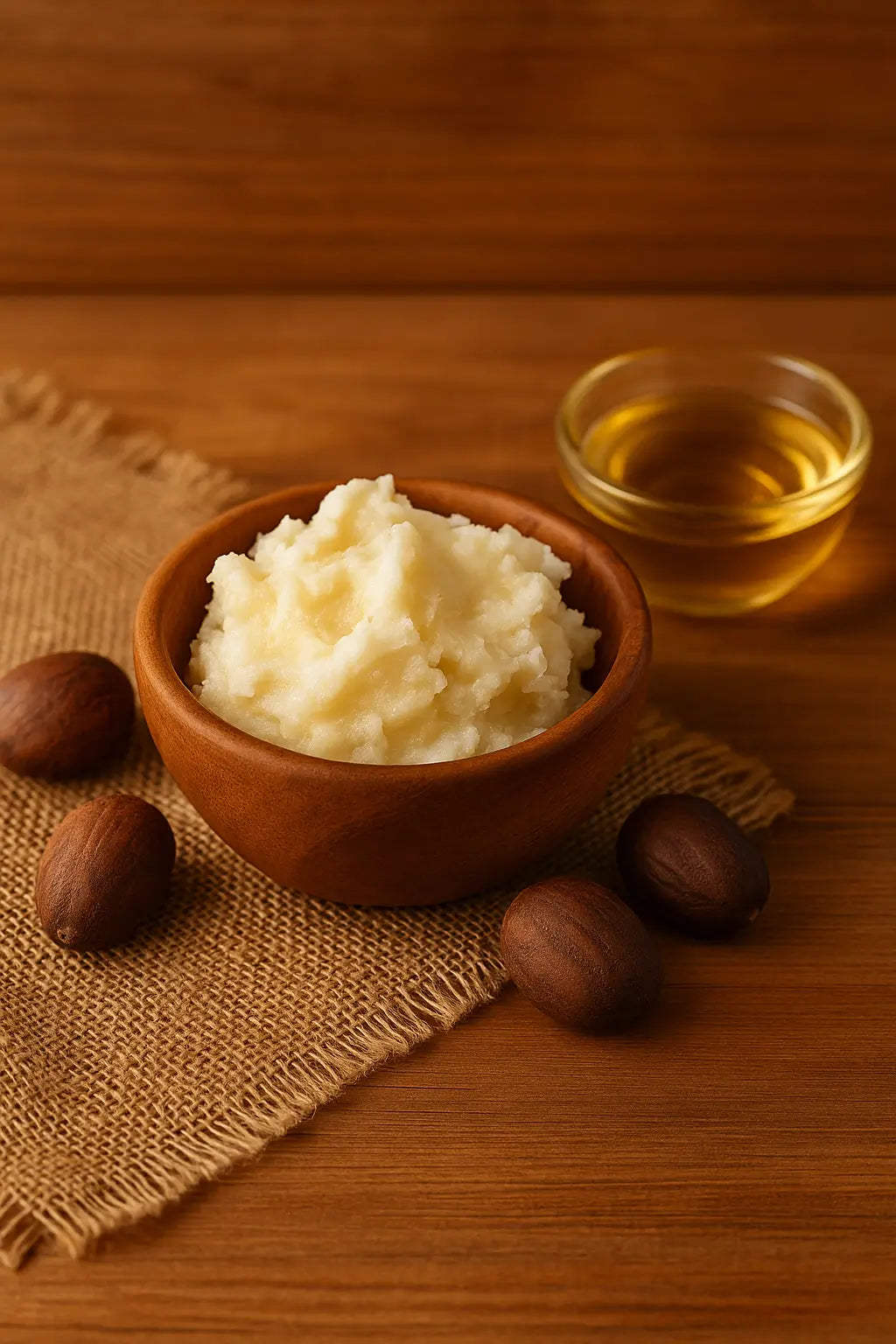
What Does Shea Butter Do to the Skin? The Natural Wonder Explained
If you’ve ever looked for a skincare ingredient that’s powerful, natural, and trusted across generations — look no further than shea butter. Extracted from the nuts of the African shea tree (Vitellaria paradoxa), this creamy, rich substance has been used for centuries to nourish and heal the skin. But what exactly does shea butter do to the skin?
Let’s break it down — the benefits, the science, and how to use it for radiant, healthy skin from head to toe.
🌿 What Is Shea Butter?
Shea butter is a natural fat, rich in vitamins, antioxidants, and essential fatty acids. It’s typically ivory or yellowish in color and solid at room temperature, but melts instantly on skin contact. The best type for skincare is raw, unrefined shea butter, which retains its full nutrient profile and offers the greatest benefits.
🧴 What Does Shea Butter Do to the Skin?
Here’s a detailed look at how shea butter benefits your skin — from hydration to healing.
✅ 1. Deep Moisturization
Shea butter acts as an intensive moisturizer, penetrating deep into the skin without clogging pores. Its fatty acid content — primarily oleic, stearic, and linoleic acids — helps restore the skin’s natural barrier and lock in moisture.
Great for:
- Dry patches
- Dehydrated skin
- Rough elbows, knees, and heels
🛡️ 2. Skin Barrier Protection
Shea butter forms a protective layer on the skin, shielding it from wind, cold, and pollutants. It doesn’t sit on the surface like some synthetic creams — it melts in and helps your skin defend itself naturally.
🌞 3. Mild UV Protection
While not a substitute for sunscreen, shea butter contains cinnamic acid, which offers light natural protection against UV rays. It’s an ideal companion for days when your skin is exposed to the sun but needs extra care.
💛 4. Anti-Inflammatory and Soothing
Shea butter calms the skin. Its anti-inflammatory properties help reduce redness, swelling, and irritation — making it ideal for:
- Eczema
- Psoriasis
- Dermatitis
- Post-sun exposure
🧬 5. Boosts Collagen and Skin Elasticity
Thanks to vitamin A and vitamin E, shea butter supports collagen production, which maintains the skin’s firmness and elasticity. With regular use, it can help minimize:
- Fine lines
- Stretch marks
- Early signs of aging
✨ 6. Helps Heal Wounds and Scars
Shea butter’s regenerative properties encourage skin renewal, making it great for:
- Fading scars
- Healing minor cuts and scrapes
- Smoothing stretch marks
🧖♀️ 7. Smoothes and Softens Skin Texture
With regular use, shea butter smooths uneven skin and leaves it feeling silky-soft. Its rich, buttery texture melts into the skin, leaving no greasy residue — just glow.
🔄 How to Use Shea Butter in Your Skincare Routine
Daily Moisturizer: Apply after showering or cleansing your face.
Night Cream: Massage into your face and neck as the final step in your evening routine.
Body Butter: Use generously on dry areas like legs, elbows, and feet.
DIY Mixes: Combine with coconut oil or jojoba for a whipped butter or balm.
🛍️ Why Quality Matters
To reap all these benefits, make sure you're using 100% pure, unrefined shea butter — preferably ethically sourced. Avoid refined versions with added fragrance or preservatives, as they often lack the full therapeutic value.
💬 Final Thoughts
So, what does shea butter do to the skin?
It moisturizes, heals, protects, and restores. It’s one of the few ingredients that can truly be called a full-body solution — safe, effective, and deeply nourishing.
Whether you’re dealing with dryness, irritation, or simply want to maintain healthy, glowing skin, shea butter is a must-have in your routine.
🔗 Explore More:
🛒 Shop Our Pure Shea Butter Collection
👉 yellowbrickroadsheabutter.com/collections/all
📚 Read More Natural Skincare Blogs
👉 yellowbrickroadsheabutter.com/blogs/shea-butter
